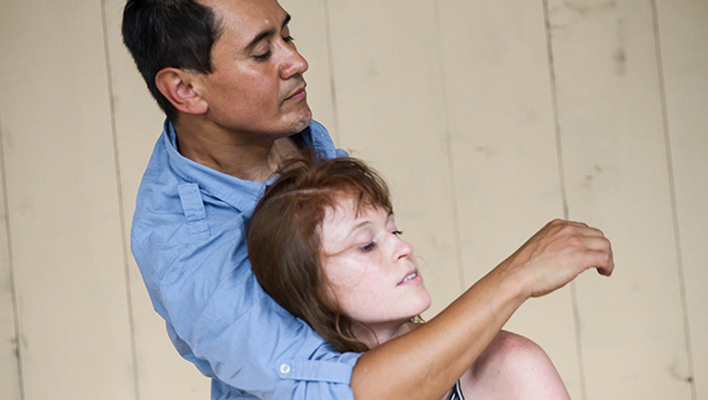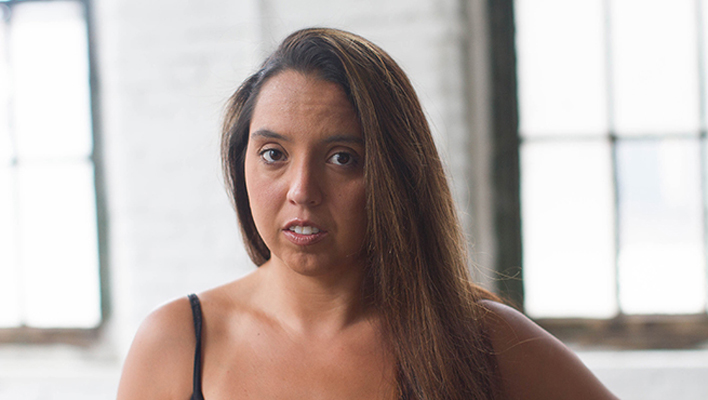Not long into the first act of “Climb,” Gabriel Martinez Rubio steps onto a ladder. This is, of course, inevitable in a work so titled. What is not inevitable is how deeply a mundane household item can resonate. It turns out that ladders, as symbols, can be incredibly versatile. At once they represent opportunity, mobility, trust, faith and instability. They can be a means to escape from chaos or an agent of chaos themselves. None of this would likely have occurred to me if not for MamLuft&Co. Dance’s new work.
“Climb” was choreographed with clear emotional investment by Elena Rodriguez Moore and performed compassionately by MamLuft&Co. Dance. It is two stories. The first act tells the story of a man (Rubio) who leaves his native country to find better opportunities in America, where he struggles to find acceptance. The second act is the story of his second-generation daughter (Corrinne Bailey), who struggles to find her identity between her father’s heritage and the world she grew up in. The stories are based on the experiences of Moore and her father.

The symmetry between the two is remarkable. Early on, the father finds himself suddenly alone, surrounded by deafening silence. Toward the end, the daughter finds herself surrounded, with the chaotic music droning into a discordant crescendo. Where the father is constantly denied access to ladders, the daughter sees them closing in around her, denying her access to open space. The father is dressed all in brown and surrounded by dancers in white—one of the more straightforward symbols that helps ground the audience’s understanding of the work. The daughter wears both brown and white, and has moments where she is excluded from both worlds.
Throughout both stories, six step ladders underscore the major themes of the performance. When the father decides to leave his native country to find a better life, they are his means of escape. When he arrives in the United States, they are a tantalizing glimpse at opportunities he is consistently denied. When he meets his wife (Susan Honer), the two perform a stunning duet around and on a single ladder. It’s after the daughter is born, though, that the choreography climbs to another level.
The mother teaches her daughter to navigate their culture—the white ladders—maybe in a hope that she’ll never face the same struggles the father faced because of his color. Her interaction with the ladders becomes more frenetic over time. As a mortal human who has stood on a tall step ladder before, I was shocked at how terrifying this scene became. A ladder is not an uncommon thing, but when you climb them there is a real sense of danger at the slightest wobble. Through Moore’s stunning choreography, Corrinne Bailey weaponizes that sense of danger, resulting in a deeply thought-provoking piece that forced me to examine my understanding of the experiences of second-generation Americans.

This only scratches the surface of the depths that MamLuft&Co. Dance explores in “Climb.” This work strives to bridge a cultural divide that is only widening in the political climate we inhabit, but it is not necessarily a political work. The message Elena Rodriguez Moore is broadcasting is not about policy, but understanding. You can certainly find allusions to political issues if you look for them—indeed, it’s hard not to when the ladders form a wall between those in brown and those in white—but at it’s heart, “Climb” aims for compassion. In sometimes surprising ways, its aim is true.
“Climb” closes tonight (January 6) with one more performance at the Aronoff Center’s Jarson-Kaplan Theater. Find tickets on MamLuft&Co. Dance’s website.
Zach Moning is the communications manager at ArtsWave and editor of ArtsWave Guide. Reach him here with questions or comments about ArtsWave Guide.